The streets were a solid mass of people dancing. The music beat and throbbed violently. At the grand plaza, the people launched fireworks. All the carnivals I had seen paled in comparison. – Ernest Hemingway for Toronto Star Weekly
In one of the streets of Pamplona, the locals have a clock that indicates the exact time that is left for the Sanfermines to start. The clock indicates the months, days, hours, and seconds for this beloved festivity to start.
At noon on July 6, the Sanfermines will officially start in Pamplona, Navarra in Spain. Their objective is to honor San Fermin, considered to be the first bishop of Pamplona; and co-patron of Navarra.
The festival ends on July 14 with the song Poor Me (Pobre de Mi) at midnight. The participants go to the City Hall with a candle after chanting Poor Me, they chant there’s less to go! for the next San Fermin to arrive.
Pamplona originally observed this on Saint Fermín’s feast day, on September 25. In 1592, the date changed to July due to the bad weather. Currently, the Fiesta starts with the chupinazo, followed by the traditional phrase People of Pamplona, Long Live Saint Fermín.
In Spanish its called “Pamploneses, Viva San Fermín, Gora San Fermín”. The chupinazo is a shot made with a rocket from the balcony of the Pamplona City Hall.
An important milestone of the festivity was the creation of the figures that make up the Comparsa of Giants and Cabezudos in the 19th century.
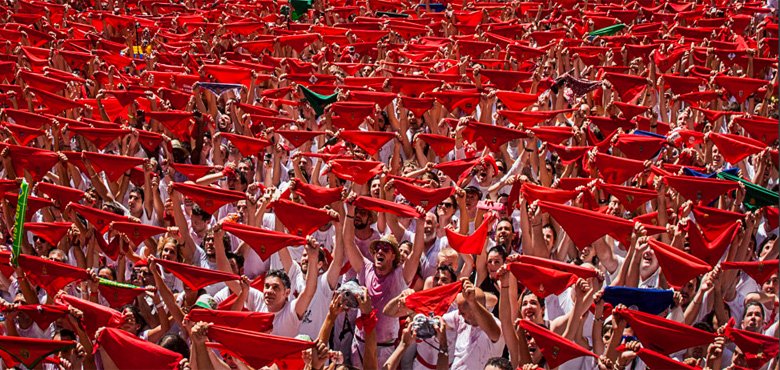
New Cabezudos, kilikis, and zaldikos completed the Comparsa of the Court. The Comparsa is a parade featuring large puppets carried by the marchers, as well as numerous parties and spontaneous gatherings.
PROCESSION OF SAINT FERMIN, ENCIERROS, RIAU RIAU
The Procession of Saint Fermin starts on the morning of July 7. The Municipal Corporation alongside clarinetists, timbaleros, maceros, escort, txistularis, pipers, the Comparsa of Cabezudos and Giants, and Municipal band (La Pamplonesa), go to the Cathedral to look for the Assembly of the ecclesiastical charges of the cathedral.
Then they retrace their steps and go to the chapel of San Fermín (church of San Lorenzo) to pick up the image of the saint.
After that, the procession begins its journey through old Pamplona, which in an hour and a half returns the image of the Saint to its chapel. From there, both go back to the cathedral to separate and declare the end of the act.
Besides the religious aspects of the festivity, the cattle fairs, and the running of the bulls (encierro) also became part of it. The bulls to be used in the fights first run through the streets of the town to the bullring.
At 4 pm, thousands of people occupy once again the city hall and then the calle mayor; singing and dancing the Riau Riau. Riau Riau is a waltz that Miguel Astrain composed in the XIX century. Furthermore, the government suspended this tradition in 1991 but decided to continue with it in 2012.
INTERNATIONAL POPULARITY
Now both locals and tourists are part of the celebrations. Ernest Hemingway wrote about the Sanfermines in his book called The Sun Also Rises in 1926. Hemingway’s title of the book in Spanish is Fiesta, one of the most important of the author.
In his book, Hemingway tells the story about the trip to Pamplona of a group of US and English citizens exiled in Paris. Hemingway’s book attracted international attention to the Sanfermines.
In 2018, Pamplona received 521,396 tourists to be part of the festivity. In 2019, 13,800 people ran the encierros, 300 less than the ones that did in 2018. Throughout the year, Pamplona has a population of around 200,000 people, but in Sanfermines, it rockets to a million.
This is because people from all over Spain and many countries visit the city to celebrate the Sanfermines. Moreover, due to the covid-19 pandemic, Pamplona had to suspend the Sanfermines for two years (2020-2021).
HISTORY OF PAMPLONA
Pamplona is a city with overflowing history. It dates back to the primitive basque settlement in the iron age, located in an area of terraces on the river Arga. In the year 75 BC; the Roman general Pompey, who was on his way to war against Sertorius, arrived at the primitive settlement.
The settlement then developed to be the Roman city of Pompaelo. Around this same era, the Greek geographer, Estrabon; left the oldest reference preserved of the city. Estrabon stated: then, above Jacetania, heading north, is the nation of the Vascones, whose main city is Pompelon; as they say, the city of Pompey.
In the 5th century, little Iruña was under the rule of the Visigoths, who established a bishopric. Later in 711, the Muslims invaded and settled in the city. 67 years later, Charlemagne destroyed the walls of Pamplona.
This gave rise to the Battle of Roncesvalles; which has been considered the seed of the Kingdom of Pamplona. The first king was Iñigo Arista.
PAMPLONA IN MEDIEVAL TIMES
In medieval times, the city grew divided into three different settlements. The original nuclei (Vascon and Roman) formed the city of Navarreria. The inhabitants, who were Navarrese, mainly engaged in agriculture. Their language was Euskera, which is the only pre-Indo-European language still alive in Europe.
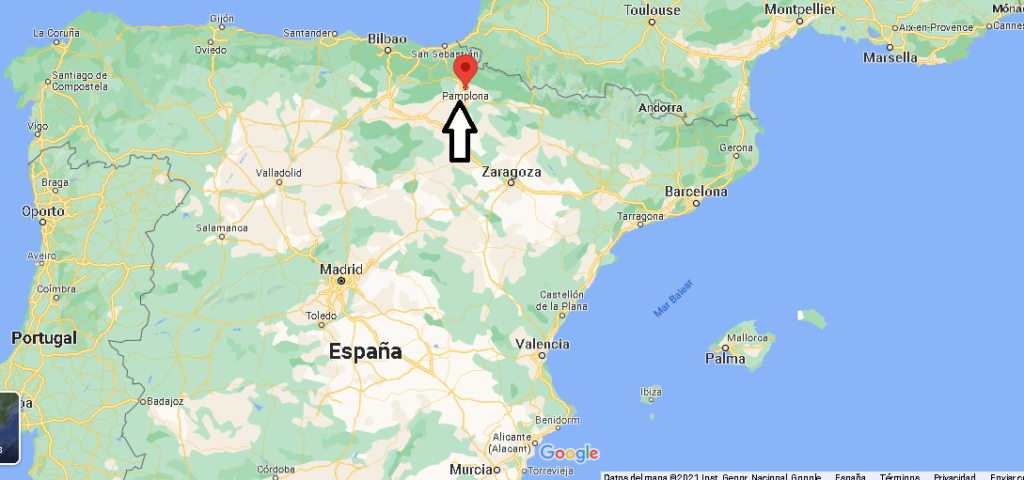
Under the protection of the Camino de Santiago; many French citizens arrived in Pamplona attracted due to the offer of the Kings within the repopulation policy. This was the origin of the village of Saint Saturnino, whose inhabitants were mostly artisans and merchants, their language was Occitan.
Navarrese from other towns and other foreigners formed a third population nucleus, the Village of Saint Nicholas. The inhabitants of this village also dedicated themselves to agriculture and other jobs.
In 1276, in the Navarreria War; the villages of Saint Nicholas and Saint Saturnino joined forces and destroyed Navarreria. Moreover, King Charles III, the Noble was responsible for the peace in 1423 through the privilege of the Union.
This meant that the three settlements joined to form only one community; where the three cities converged, they built the Jureria, today the Town Hall.
PAMPLONA AFTER THE CASTILIAN CONQUEST
In the sixteenth century; the Kingdom of Navarra was attractive to other neighboring Kingdoms like Castile, Aragon, and France. King Charles III created the title of Prince of Viana for his grandson, the future Carlos IV, son of Blanca of Navarra and Juan II of Aragón.
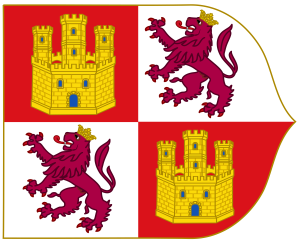
Moreover, Juan II did not allow the Prince, his son, to reign after the death of his wife. Due to this, two sides were created the agramonteses and the beaumonteses. Juan II remarried Juana Enriquez and Ferdinand the Catholic was born.
Ferdinand was allied with the English crown and the Kings of Navarra with the French. In 1512, Ferdinand sent an army against the Kings; forcing them to flee and relocate the court on the other side of the Pyrenees to try to take the Kingdom back.
After several attempts, the Kings were defeated in 1521. The 18th century brought many improvements to the city and the quality of life of the citizens. Those improvements were the pavement of the streets; the improvement of the sewage system; and the arrival of public lighting with lamps.
The Noain aqueduct, designed by Ventura Rodríguez, with which they brought water to the city, was the most important improvement to the city. In 1841, Navarra was not a Kingdom anymore due to the degradation to a province through the law. +
PAMPLONA IN THE XIX CENTURY AND TODAY
The city experienced the worldwide successes of the violinist Pablo Sarasate and the Roncal tenor Julián Gayarre. Musical institutions were born like the Orfeon Pamplones, La Pamplonesa, and the Santa Cecilia Orchestra.
Due to the insufficient space, it was necessary to bring down some parts of the architecture. Now the city has grown quickly. In 1950, the University of Navarra was born and 30 years later came the Public University of Navarra.
Pamplona is also well known for its health services like the Clinic of the University of Navarra and the Center of Medical Research (CIMA).
WHAT TO SEE IN PAMPLONA?
After reading its extensive history, it’s important to mention the best spots in the city to visit. The first is the Cathedral of Santa Maria la Real of Pamplona built over the remains of a Roman temple in the XIV and XV centuries.
The bell of Maria, located in the left tower dates back to 1584; and it’s the second-largest in Spain, with a weight of 12,000 kg. The cloister, completed in 1472, is considered one of the most beautiful in Europe.
The cathedral also has several important pieces like the Reliquary of the Holy Sepulchre, which contains a Lignum Crucis.
The Archbishop’s Palace near the Cathedral is important as well. Then we have the Museum of Navarra; the Town Hall of Pamplona; Plaza del Castillo, the Museum of the University of Navarra; the Monument to the Encierro, the Citadel, and the bullring.
Other important spots are the Gardens of Taconera; the Church of Saint Saturnino, Yamaguchi Park, Walls of Pamplona; the Church of Saint Lorenzo, the Royal and General Archive of Navarra; Planetarium, the Pamplona Fortifications Interpretation Center; the Palace of Navarra, and the Crescent Park.
Finally, Pamplona has other important spots for tourists, like the portal of France, Monument to the Fueros, the Science Museum of the University; Galaxy Garden, the White Horse Viewpoint; Aranzadi Park, Museum of Environmental Education; Mendillori Lake, and Sierra del Perdon among others.
ERNEST HEMINGWAY
Hemingway is a US author whose work is considered classic in the literature of the XX century. His work is sober with tragic elements and the portrait of the time he represented. Hemingway received the Nobel Prize in 1954.
The author enlisted in the army as a volunteer in World War I, where he was an ambulance driver until he was gravely injured. Hemingway then returned to the US where he resumed his job as a journalist until he went to Paris.
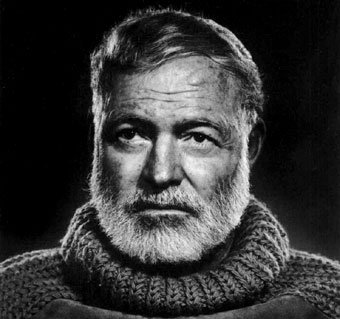
In Paris, Hemingway met Pablo Picasso, Ezra Pound, James Joyce, and Gertrude Stein. Hemingway also participated in the Spanish Civil War and World War II as a correspondent, where he later included those experiences in his novels.
Among his first books, the readers find Three stories and ten poems (1923); In our time (1924), The Sun Also Rises (1926); and Men Without Women (1927).
HEMINGWAY’S LOVE FOR PAMPLONA
Hemingway arrived in Pamplona on July 6, 1923. Stein told him that the capital of Navarra had the best bullfights. Alongside his wife, Hemingway arrived in Plaza del Castillo, one of the many hearts of the festivity.
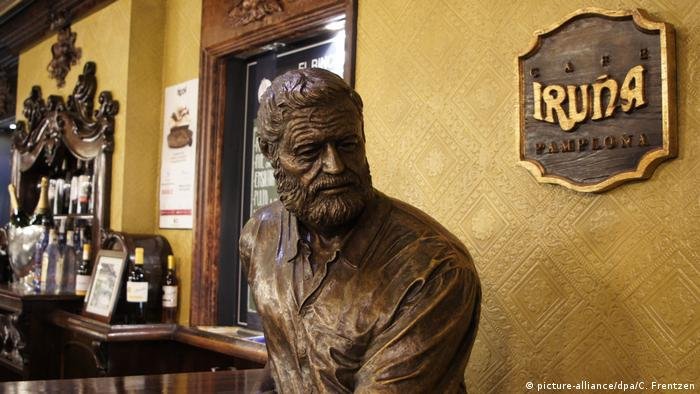
Hemingway wrote his impressions of the city in an article for Toronto Star Weekly where he still worked. The second part of his novel Fiesta takes place during the Sanfermines. Juan Villoro stated that Hemingway became a spokesman for a generation that could only be proud of his wounds, and nothing would ever be the same as before.
Hemingway participated in the Sanfermines nine times from 1923 to 1927, then in 1929, 1931, 1953, and 1959. These nine times were enough to leave his name branded in the history of the city.
One of the main responsible for the fame of the Sanfermines is Hemingway. Thanks to him people all over the world traveled to Pamplona. On 2 July 1961, Hemingway ended his life but he had tickets to attend the Sanfermines.
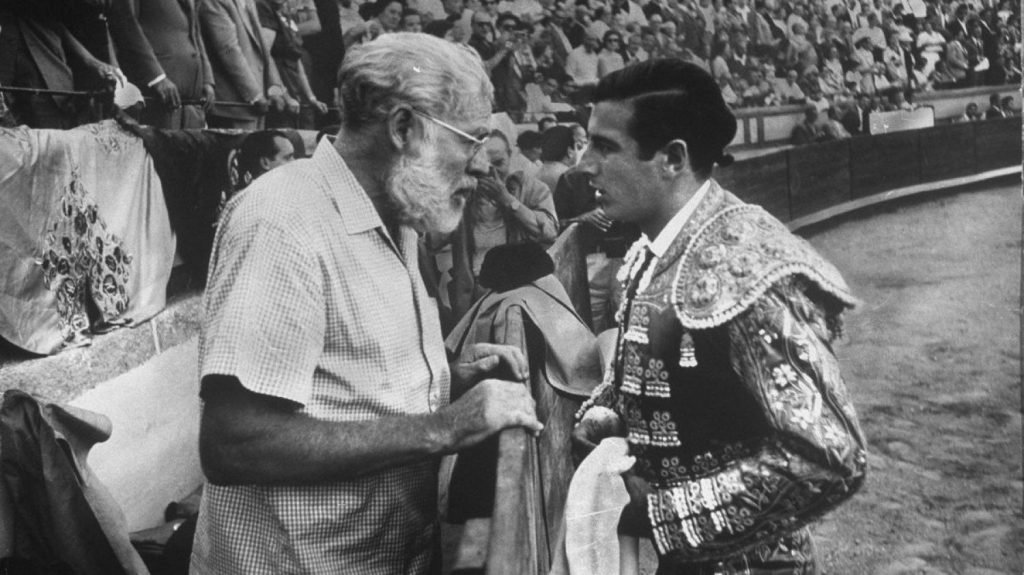
Rodrigo Fresan wrote in the prologue of Death in the afternoon that it’s not risky to affirm that Hemingway was born in the US, but lived for Spain.
ACTIONS OF PAMPLONA TO HEMINGWAY
The presence of Hemingway in the city is unquestionable. The author is present in his statute, his Paseo, in the shops and bars that have his name; on the Hemingway route, wordplay sponsored by Navarra. Furthermore, the route marks each place that the writer visited during his stay in Pamplona.
In 1967, Pamplona’s government baptized as Paseo de Hemingway a tree-lined pedestrian path that borders the city’s bullring. On 6 July 1968, the government inaugurated at the Paseo, a bronze sculpture of Hemingway.
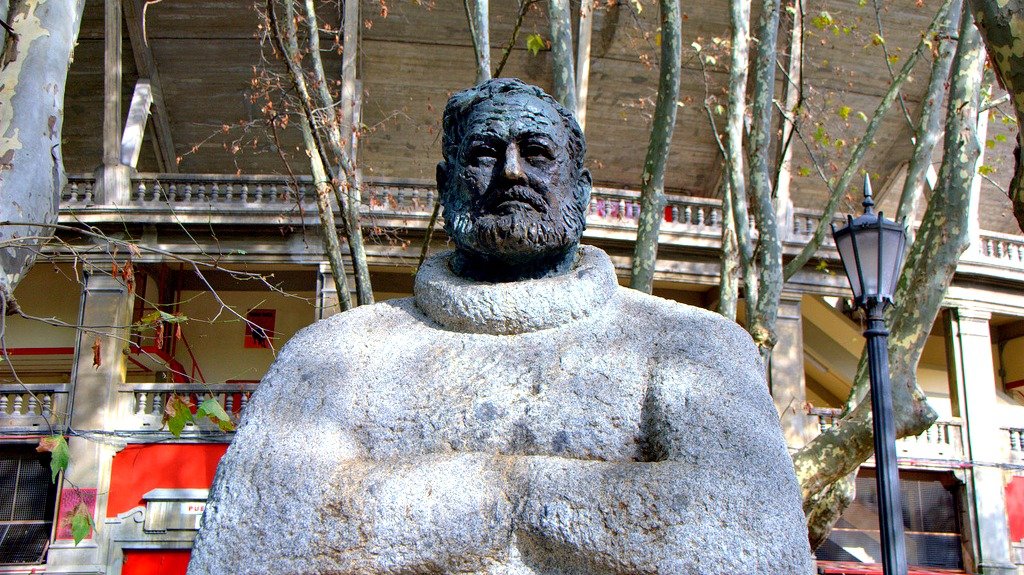
Moreover, the sculpture has a dedication in the marble base that says “to Ernest Hemingway, Nobel Prize of Literature, a friend of this people and admirer of their parties, who was able to discover and extend them.
The official poster of 2014, included Hemingway’s face. For better or worse, Hemingway’s ghost inhabits Pamplona, and much more during Sanfermines. This is because thousands of tourists go to the city, with a copy of the Sun also Rises under their arms.





